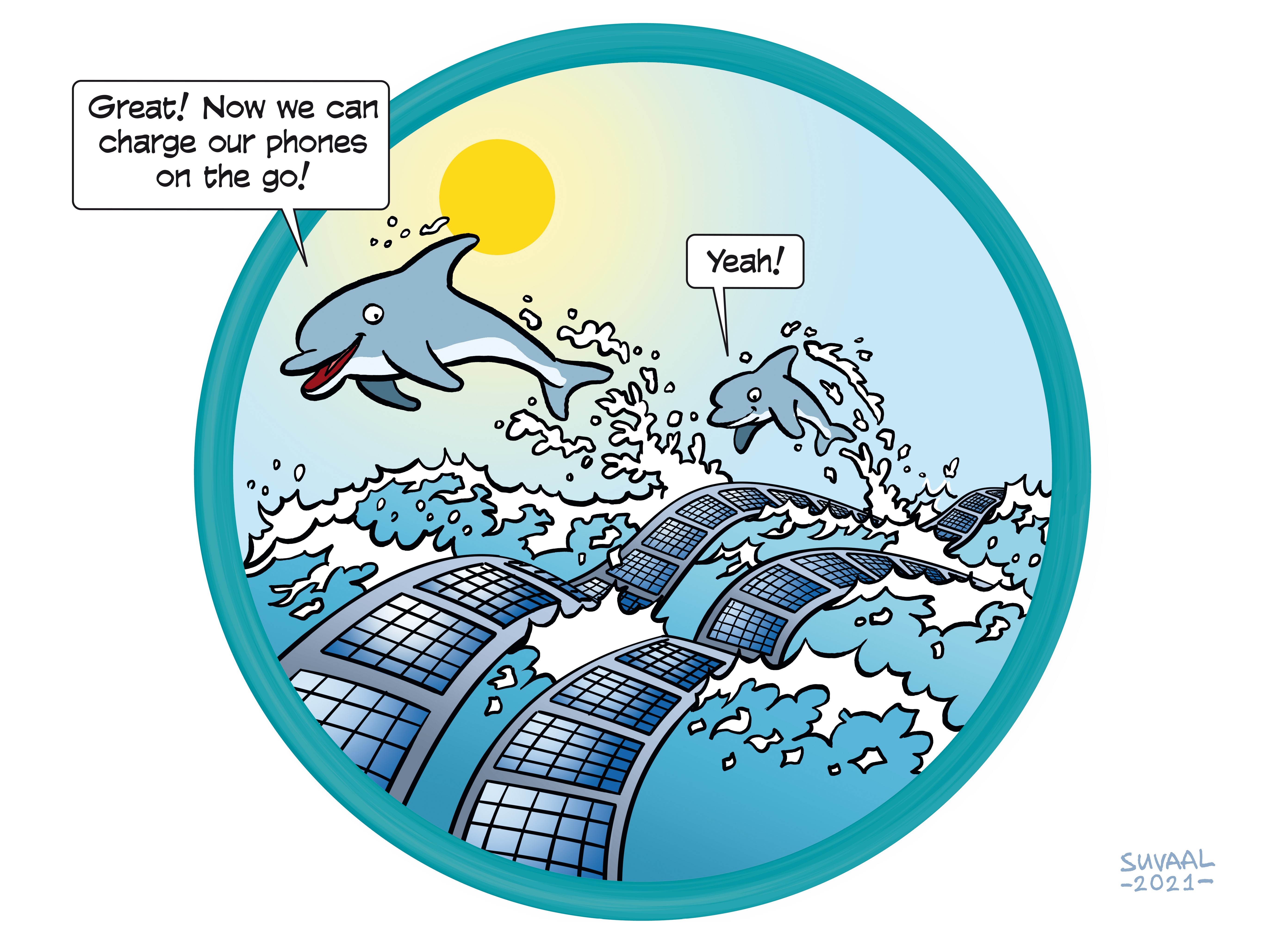Making Solar Panels Float Offshore
Research Themes: Energy, Water & Maritime


A TRL is a measure to indicate the matureness of a developing technology. When an innovative idea is discovered it is often not directly suitable for application. Usually such novel idea is subjected to further experimentation, testing and prototyping before it can be implemented. The image below shows how to read TRL’s to categorise the innovative ideas.
Summary of the project
The potential of having solar farms at sea – in terms of space – is huge. Doing so is a different ball game. Placing conventional solar panels on a concrete structure that floats is not cost and space effective. So the researchers work on designing and testing other types of solar structures that float. They look at lightweight modular structures that are more flexible – that can move with the waves, and go even one step further and investigate floating membranes. Imagine floating solar panels that rest on the waves like a blanket that are kilometers long. This raises all sorts of questions about the hydrodynamic effects; on how do we prevent waves from washing over the floating structure but also on what happens to the waves while travelling underneath the structure. From the structural perspective, wrinkling and fatigue are but two of the topics that are investigated. And practically, how can the structure be installed and moored in the most effective way?
The researchers are combining experiments in the towing tank on small scale models with numerical simulations to gather data for deeper insight into the physics and for further optimization of the design so it can be implemented at open sea.
What's next?
The next step is to build the lab tested prototypes to full scale. A change of scale can have a huge impact on how the floating solar panels behave; what works at lab scale can be disastrous a full scale due to how the materials react. Another next step is to look at the interaction of the panels with life at sea. How fast will barnacles and algae use the floating panels as a substrate. And can the panels be designed and constructed in such a way that part of the light falls through the panels for under water growth.
Contribution to the Energy transition?
With floating solar panels in between the wind turbines at sea we can harvest 3-5 more renewable energy at the same area than with the wind turbines alone. Solar panels require lots of space, which is scarce on land. With floating solar panels combined with offshore wind turbines, more renewable energy can be harvested and offshore electrical infrastructure can be used more efficiently.
Dr.-Ing. Sebastian Schreier
Min Zhang MSc
dr. ir. Ido Akkerman
Hugo Verhelst MSc
dr. Matthias Möller
dr. Ir. Henk den Besten
dr. Carey Walters
Faculties involved
- 3ME
- EWI
